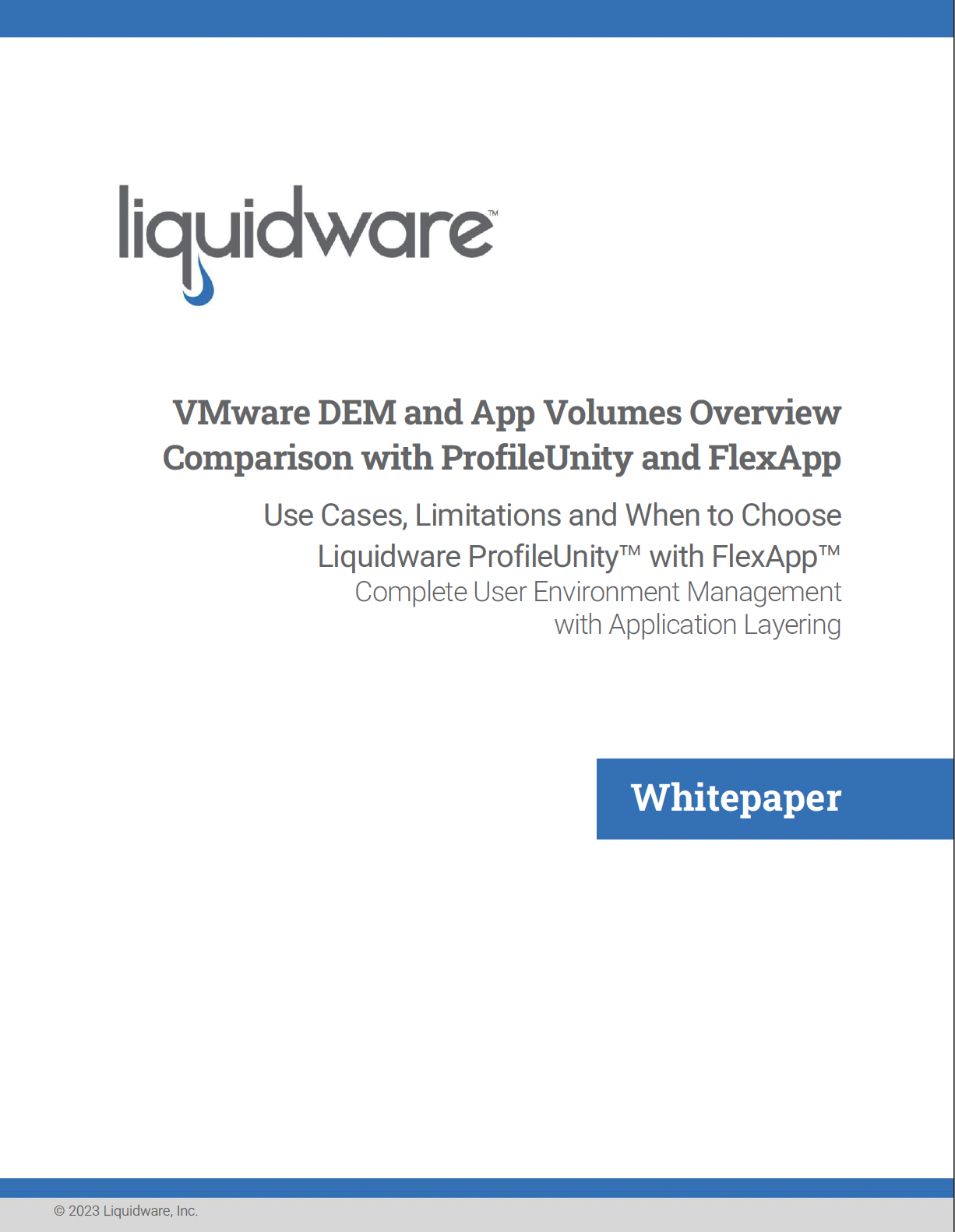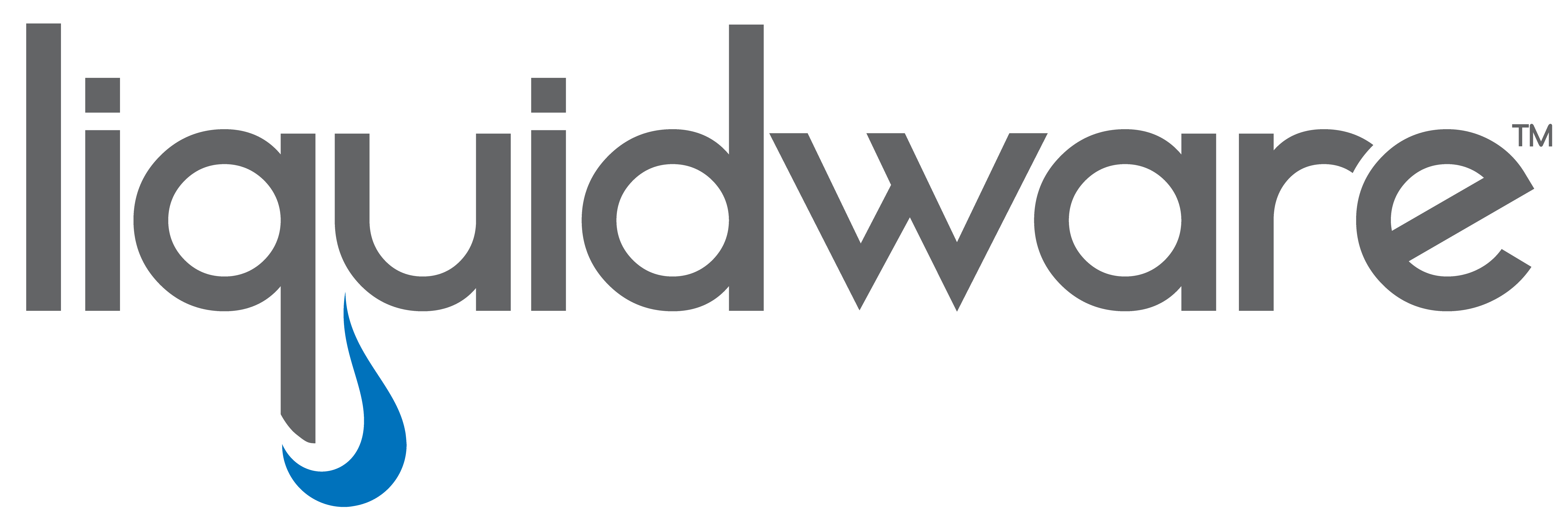WHITEPAPER
VMware DEM and App Volumes Overview Comparison with ProfileUnity & FlexApp
© 2023 Liquidware, Inc. All Rights Reserved.
ABOUT THE WHITEPAPER
This guide has been authored by experts at Liquidware in order to provide information and guidance regarding some of the frequently asked questions customers encounter while exploring the FlexApp™ Layering technology. FlexApp Application Layering is an integrated part of ProfileUnity that enables applications to be virtualized in such an innate way that they look native to the Windows operating system (OS) and other applications. FlexApp is a perfect complement to ProfileUnity, which provides full user environment management (UEM) with advanced features such as Application Rights Management and context-aware settings for printer and policy management. Although FlexApp is cost effectively licensed with ProfileUnity™, the solution can be licensed separately if your organization has already standardized on an alternative User Environment Management solution. Application Layering leads to much higher rates of compatibility than previous technologies which used Application Isolation to virtualize applications. Once applications have been packaged for layering, they are containerized on virtual hard disks (VHDXs) or virtual machine disks (VMDKs). They can be centrally assigned to users on a machine-level or context-aware basis. FlexApp applications are compatible with virtual, physical and multi-session Windows® environments such as VMware® Horizon View, Citrix® Virtual Apps and Desktops and Microsoft® AVD. This whitepaper provides an overview of FlexApp concepts and ways in which FlexApp can serve as a cornerstone in an application delivery strategy. FlexApp greatly reduces desktop administration overhead by dramatically reducing the need for traditional software distribution and through a reduction in the number of base images needed to support users. FlexApp is a powerful ally of VDI users and administrators. This paper compares Liquidware solutions to VMware App Volumes version 4 and its current updates through the last revision of this document.
REGISTER

